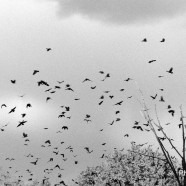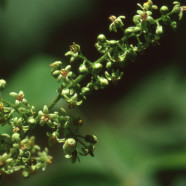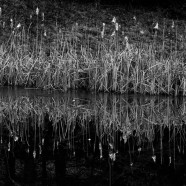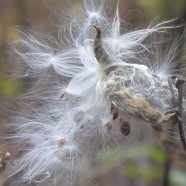Merry Groundhog Day
Best wishes for a joyous and festive Groundhog Day! Thanks to Frank Knight for this lovely close-up of a young woodchuck (groundhog, same thing.) It’s my favorite holiday. You think I’m kidding? Not at all. Don’t underrate the simple pleasures of Groundhog Day. No shopping. No presents. Not a single dish to wash. But the real reason it’s my favorite holiday is this—Groundhog Day celebrates the natural world. Think about it—a holiday that takes its meaning solely from nature. It doesn’t commemorate any human event—a war, a peace, or anyone’s birthday. It can be celebrated by people of...
Read MoreCrows in the City: Should We Run?
More and more, cities across the US are being discovered by crows as the perfect place for a slumber party. Crows love to roost in cities on winter nights. And the crows congregate in vast numbers–some roosts are made up of hundreds of thousands of birds. They’re impossible to ignore. When twenty thousand birds are swooping over your house, it can make you a little…well…nervous. Every time I see dark clouds of crows swirling overhead I’m reminded–who could not be?–of the movie. The movie. You know the one I mean, right? Admit it, the thought crosses your mind every time you see a flock of...
Read MorePoison Ivy: Spring Flowers
“Poison ivy” and “flowers” are words that don’t seem to fit in the same sentence. Yes. Poison ivy has flowers. Dainty and delicate, lovely flowers that, yes, will give you a lovely rash if you’re allergic to urushiol, the irritating chemical found in almost all parts of the poison ivy plant. Poison ivy flowers are rich in nectar and very attractive to bees. Fortunately for honey-lovers, there’s no urushiol in poison ivy nectar or pollen, so eating poison ivy honey is not a problem. In fact, if you like honey, you’ve probably eaten poison ivy nectar many times....
Read MoreGoldenrod: Fill Up the Feeders
Big winter storm! For once the weather hysterics were right, and we got a lot of snow, even more than they threatened. A winter wonderland which is great for kids (tough luck it’s on a Sunday, guys, could have been a snow day…). Great for skiiers. Great, in fact, for all snow lovers, including mice, red squirrels and meadow voles who can tunnel safely beneath the drifts and avoid predators. But deep snow is tough on some types of wildlife. If the seeds are all hidden underneath a blanket of white, what’s a bird to do? Looks like it’s shaping up to be a long cold...
Read MoreCattails: Winter Warmth
Cattails in a winter marsh, with a skim of ice on the water. This chilly picture seems to be the very essence of cold. But actually this is an image of potential warmth. You’ve seen cattail seed heads, I’m sure, when they’re just ripe–they look like a brown velvet hot dog impaled on a stick. Just one of those spikes can hold an unbelievable number of seeds–somewhere in the vicinity of a quarter of a million seeds on each stalk. Each individual seed is a tiny dot, almost invisible, attached to a little cluster of fluff, which acts as a parachute so the seeds can...
Read MoreThankful for Milkweed
Where are they? The monarch butterflies—where have they gone? Those big bright orange rainbows that flutter past every fall. Where did they go this year? They didn’t flutter past my house. I saw not one. Did you? What’s happening? I can hardly bear to say, it, but the monarchs are dwindling. Monarch populations hit historic–disastrous–lows this year. There are a lot of reasons for this—pesticides, bad weather, habitat loss. But a big reason is loss of milkweed. Milkweed. It’s the plant that monarchs need. The only plant they lay eggs on, the only plant the caterpillars will feed...
Read More










Recent Comments